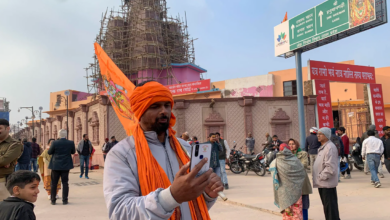Holi Festival Invites Us To Welcome the Good Times
The last full moon of the Hindu lunar month of Phalguna, between late February and mid-March, not only marks the entrance to a new season, spring, but also the victory of good over evil.

The Woman Post | Ayda María Martínez Ipuz
Listen to this article
Read more content like this at: thewomanpost.com
This is the Holi Fest of colors, a popular spring event celebrated in India, Nepal, and also now spread to several countries in the Western world.
Beyond the colored powders that are thrown asking the gods for love, health, and wisdom, Indian culture welcomes spring as a sign of new beginnings after the cold autumn and winter seasons that kept humans in the shadows. Therefore, the celebration includes a carnival of light in which believers gather around giant bonfires to sing, light candles, and dance around them.
According to legend, Holika, sister of King Hiranyakashipu and aunt of Prince Prahlada, tried to kill her nephew to seize power. She invited him to sit with her in the center of a bonfire, but the prince, who adored the God Vishnu, was assisted by him to demonstrate that good always triumphs over evil.
But the true meaning is stronger for believers. For Lila Govardhan, a yogi and yoga teacher trainer through Fullnes Camp, the festival extends its meaning beyond, encompassing beliefs and opportunities for new beginnings.
"This makes you think about a new start, it's the opportunity to leave negative things behind in life, and it's time to start something new," Lila explained.
Since March 8th, in countries such as India and Nepal, and communities in several Latin American countries, this celebration has been held with colored powders or petals: yellow, representing turmeric and its effects on maintaining good health according to Ayurvedic medicine; blue, in honor of the God Vishnu, whose skin color is blue; red, referring to love and fertility, while green honors spring.
The lessons of this carnival reach each person in the way they act and obtain protection from evil. "It's about how protection comes when you are established in the faith, defending your own and others' good, how from wanting to do the right thing, divinity is protecting you," added.
This key moment for Hindu culture is considered an opportunity to meditate on how we face difficulties so that they come out of the darkness. "For example, if you have problems and have faith that you will get out of it, that is the symbolism that good could overcome evil" and she insisted that the legend reminds us that faith moves mountains.
"One thing is to believe that things don't go well, and that's negative, but in reality, there is a purpose. For example, a flight you missed that shows that it was best for you. It's about trusting that everything is perfect; you must fight to do the right thing and let go and understand that in everything good or bad, there is a blessing," she explained.
For the expert, regardless of religious beliefs, cultural events like Holi should not be exclusive to India and Nepal because they are about applying universal laws such as love: "It's about establishing myself in those laws where I take care of my good and others. They are instruction manuals that all religions have. It's about connecting with divinity to trust," she expressed.
In this way, these types of cultural practices show the value of universal actions such as love, solidarity, acting well, and good wishes to find victory together. It is the symbolic way in which every year, the triumph of good over evil.




